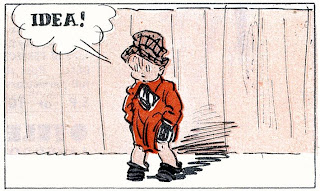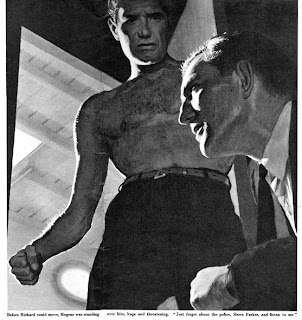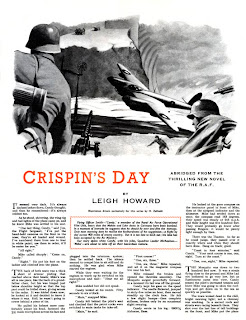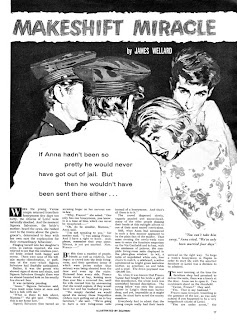
THOMAS E. HIBBEN, JR., Architect and Engineer
By Tony Woolrich
By Tony Woolrich
Thomas E Hibben wrote two books about tools and metallurgy for young people, during the 1930s but is now forgotten.
Thomas Entriken Hibben, Jr. was born October 1893, at Indianapolis, Marion Co., Indiana, USA, the son of Thomas Entriken Hibben, Sr., the artist. He studied architecture and engineering, attending Princeton University, the University of Pennsylvania and schools in London and Paris. Thomas designed several of the buildings at Butler University in Indianapolis and the first phase of the Lincoln Boyhood National Memorial.
He came to Washington in the early 1930s to serve as chief engineer in an emergency reconstruction program under President Roosevelt, and worked on several New Deal projects for the Government. He was interested in low cost housing and was an authority on rammed earth construction [pisé]. He married Carmela Koenig, 5 July 1938, in Holborn, London and adopted Roderick, her son from a previous marriage.
During World War II, Thomas was an industrial and construction engineer in the Bureau of Economic Warfare. He also served in the African and Italian campaigns, and later in Austria. After the War he became an expert in foreign trade and economic development of emerging nations.
 Between 1946-50, he was advisor to the United States section of the Caribbean Commission and also adviser for foreign economic development in the Office of International Trade, United States Department of Commerce. He was engineering and technical consultant to the joint Philippines-United States Finance Commission in 1947, and was the author of reports “The Economic Development of the Philippines,” published in 1947, and the “Industrial Development of Puerto Rico and the Virgin Islands,” 1948. For the next two years, he was technical adviser on power and economic development to the joint Brazil-United States Technical Mission and he filled a similar role as engineer-adviser to the Technical Mission to Western Germany.
Between 1946-50, he was advisor to the United States section of the Caribbean Commission and also adviser for foreign economic development in the Office of International Trade, United States Department of Commerce. He was engineering and technical consultant to the joint Philippines-United States Finance Commission in 1947, and was the author of reports “The Economic Development of the Philippines,” published in 1947, and the “Industrial Development of Puerto Rico and the Virgin Islands,” 1948. For the next two years, he was technical adviser on power and economic development to the joint Brazil-United States Technical Mission and he filled a similar role as engineer-adviser to the Technical Mission to Western Germany.He was appointed by Secretary General Trygve Lie of the United Nations in 1950 as resident representative with the rank of an ambassador to Pakistan. While attending an official function in Karachi he suffered a heart attack and died, aged 58. His remains were returned to Arlington Cemetery in Washington, DC.
Like his father, Thomas was an artist and he authored and illustrated by line drawings, two books about technology for young people.
 A passage from the dedication to the first, The Carpenter’s Tool Chest (1933), explains his approach:
A passage from the dedication to the first, The Carpenter’s Tool Chest (1933), explains his approach:This book was made for you, TOM, and HILTON and ROBERT, that you might know something of the tools with which the world around you has been built and how these tools came to be. Then, too, I would like you to know about the carpenters, how they lived and worked, built bridges and boats and buildings down through the centuries. And while carpenters' work is more for boys than for girls I would like JILL and BARBARA and PHYLIS-ANN to read the book too, for tools and the people who work with them are so important to us all our lives that I think we ought to know as much about them as we can.The book begins with a series of pages each illustrating the changes in the design of different hand tools from prehistory to the present-day—the hammer, measuring tools, the saw, the plane, the drill, etc. Then follow a series of chapters describing how the tools were used and their history by period, beginning with the stone age and ending with the Renaissance. Hibben ranged world-wide for his illustration examples.
In 1940, after extensive research in Europe, he wrote and illustrated Sons of Vulcan, the story of metals. The book begins with a brief history of tools and the work of the smith in antiquity followed by two chapters about mining, a chapter about metals and two chapters about tools in the bronze and iron ages, followed by a brief history of steel. The book concludes with chapters about the modern blacksmith and his work and makers of arms and armour.
Both books are clearly written and the writer’s voice can be heard as though he is in the room talking to the reader. Hibben’s drawing style was very simple, and largely comprised re-workings of previously published work, such as medieval illuminated manuscripts and books of the Renaissance engineers.
Needless to say, Hibben does not appear in modern academic studies of children’s books and he wrote nothing else that appears in online catalogues.
 Sources:
Sources:George C. Hibben, "…60 Poles to a Sugar Tree and Thence to the Beginning". A Social History of the Pioneer Hibben Family 1730 to the early 1900s. Charleston, MA, Privately printed, 2003. pp.297-299. The relevant chapter can be accessed online.
Books by Thomas E. Hibben
The carpenter's tool chest. Philadelphia, J.B. Lippincott, 1933.
The sons of Vulcan. The story of metals. Philadelphia, New York [etc.], J.B. Lippincott Co., 1940. [available online via the Internet Archive]

























































































